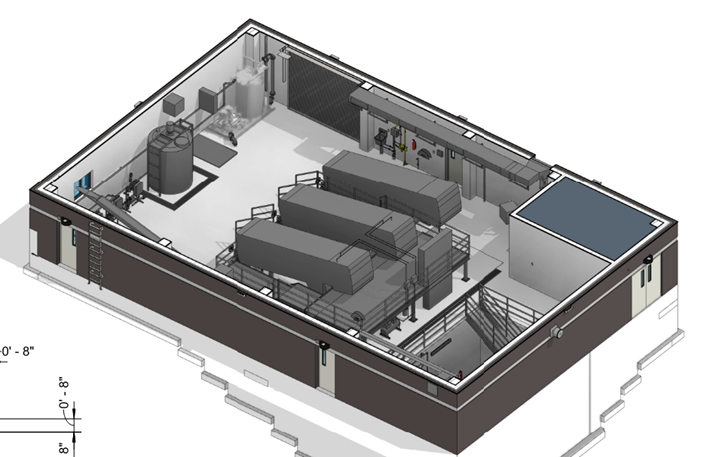The City of Pocatello Water Pollution Control department has begun construction on a major facilities upgrade project. The project, titled Water Pollution Control Facility (WPCF) Package #1 Improvements, includes several components of high importance for the operations of the wastewater treatment facility. The project includes replacing aeration diffusers, recoating a digester cover with protective paint, installing a pumped mixing system in digester #3, replacing the co-generation gas condensate trap, and installing a new screw press dewatering system for the digested solids. These project components address the highest priority issues identified in the 2021 Wastewater Facilities Planning Study.
The construction general contractor for the project is Engineered Structures Inc. (ESI). The engineering team includes Keller Associates Inc. and Stantec Consulting who have developed the project design and will provide construction phase services. The City previously entered contracts for the purchase of equipment associated with this project with Huber Technology and Xylem Water Solutions. The project cost is approximately $12 million and will be funded by user rate dollars reserved in the WPC Capital Construction Fund. The project is projected to be completed in early 2025.
The Pocatello WPCF treats 7 million gallons of wastewater per day from Pocatello and Chubbuck. Multiple treatment processes are utilized to break down and remove pollutants that could be harmful to the environment and recover resources. Some of the components that are considered ‘pollutants’ when in a river or stream are vital resources in other environments. These include energy trapped in organic material and nutrients such as phosphorus and nitrogen.
One major process, the aeration system, provides rapid breakdown of organic components by introducing oxygen for microscopic organisms to metabolize and reduce the waste. Fine bubble diffusers disperse pumped air into the water to achieve the target oxygen levels. The current improvements project includes replacing broken and impaired air piping and diffusers in all four of the aeration basins at the treatment plant.
Solids remaining after aeration treatment are placed in digester vessels where they undergo anaerobic digestion, another microbiological decomposition process which further reduces the organic waste and releases gases, including methane. The methane gas is captured and burned in generators to produce electricity that helps offset power use. The current project includes removing the steel cover from one digester and recoating with protective paint to prevent corrosion and degradation of the metal cover. While the digester cover is removed a new mixing system will be installed in the digester vessel. Also, the project will replace the condensate trap in the cogeneration gas system.
After digestion the remaining biosolids include processed microorganisms, non-volatile particles, other unreduced organic material, and a significant amount of water. The biosolids contain key nutrients for plants, including nitrogen and phosphorus. Currently the City stores the biosolids in a holding lagoon and later hauls it in liquid form to the City’s land application site, where it is used as a fertilizer supplement for growing animal feed crops. The volume of this liquid digested biosolids exceeds the capacity of the current storage lagoon and requires a large amount of hauling time to transport it to the land application site.
The improvements project will construct a new biosolids dewatering system and shift the process to dry solids land application. The new system will remove 80% or more of the water from the digested biosolids using screw presses. With most of the water removed, the remaining dewatered biosolids can be stored in piles on a new concrete storage apron. This new system will increase biosolids storage capacity, eliminate treatment process interference from lagoon overflows, and reduce the truck miles and personnel time required for the hauling of the material. WPC intends to explore an additional treatment step of composting of the dry biosolids material, which will open the door to new beneficial use options including use as landscaping compost.
Completion of the WPCF Package #1 project addresses items of critical concern for biosolids management capacity, maintenance life of essential components, and reliability of the Pocatello Wastewater Pollution Control Facility. The project advances the 20-year management plan for the facility by addressing the first critical items and laying the groundwork for additional needed improvements, include aeration blower replacement and composting.
